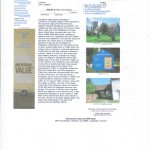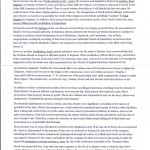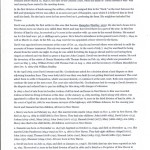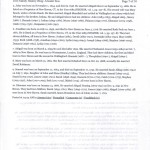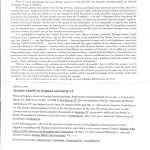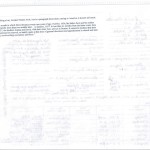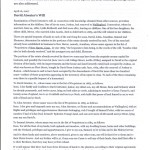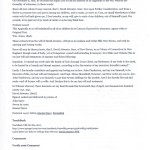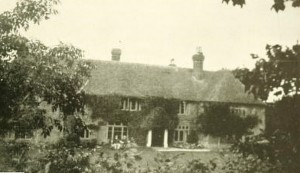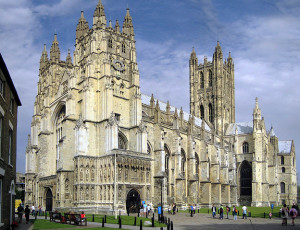
|
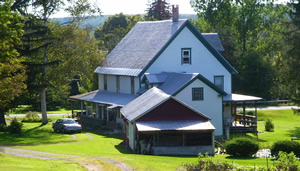
|

|
Welcome to our website, which traces the roughly ten generations of lineal descendants of one individual – David Atwater – who arrived in the United States in 1637.
Our branch of the David Atwater family is centered in Stephentown, near Albany, in upstate New York, but David Atwater’s descendants have spread throughout the United States. While there have been some later arrivals, for the most part this is a great American family that came from one man.
Judy Harper found material on Find A Grave.com that shows St. Mary’s Church in Kent. She contributes the following materials, which provide a good view of life in Kent, and a glimpse of David’s life before he left for the New World. Judy has done much research in the Kent area, and on the life of David Atwater. She is currently working on locating and documenting the first settlements of the Atwaters in Rensselaer County of New York State. You can click on each document to enlarge it.
The parish registers of St. Mary’s, the old church of Lenham, Kent, UK record the baptisms of David, Joshua, and Ann Atwater, the three emigrants, and the baptism of their father, their parents marriage, and their parents burials. The wills of their ancestors stipulate burial in the churchyard of Lenham church. Joshua and Ann left no survivors in the US family tree, so David Atwater became the one individual responsible for all the descendants.
Royton is a district in the parish of Lenham. The name applies to a section of the parish which had an organization of its own in early times, and an open public market regularly held within or near its limits. Royton is mentioned as early as 1259, when Simon Fitzadam was in possession of the manor of Royton – what would eventually be purchased by Robert Atwater and is today considered to be the ancestral hereditament.
Atwater Manor was purchased by Robert Atwater early in the reign of Henry VIII and it was in the possession of his descendants through Robert’s daughter for several centuries. In 1901, in the year of the writing of Atwater’s History, Royton Manor was somewhat of a tourist attraction in Kent, attracting numbers of descendants.
Kent is situated in the South east corner of England, bordering London, Sussex and Surrey. Kent is home to most of the major ports in the south east UK – Dover, Folkestone and of course the Channel Tunnel – which now means that Paris is a day trip.
St. Mary’s on Old Ashford Road in the small village of Lenham, Maidstone, Kent ME17 2PJ England, UK is just off the A20, a major highway. Records show that a church has been on the same spot since 804, well before David’s Christening there on October 8, 1615.
The Atwater emmigration is probably typical for the history of the times. Their father, a warden of the church, died within six months of his wife in the middle of the eleven years tyranny of Charles I and the purging of Puritans from the Church of England especially within Ashford, an area about nine miles from Lenham, by Archbishop of Canterbury William Laud.
Ashford was descibed to the Crown as a “hotbed of Puritan activity.” It seems likely that the children of John Atwater were Puritans, and with the death of their parents in 1637, it made sense for them to leave the country for the New World and a chance to practice their religion.
There is a difference of opinion in the history and genealogical books over exactly when David and his brother Joshua came to America. The family genealogy asserts that they came in 1637 and were on the ‘advance party’ to New Haven, commorated 250 years later with a granite slab in New Haven that reads “Six men, under the direction of Joshua Atwater, a merchant of Kent, England, encamped near this spot in the winter of 1637-8…” – David and his brother were among the founders of a breakaway Puritan community that sought to form a true theocracy, believing that already the Puritans at Boston had swayed from their original intentions. According to the New Haven planters, the Massachusetts Colonists who claimed to be Puritans were not adhering to the Puritan doctrines in a strict sense.
Another of the factors which may have weighed heavily on David Atwater’s decision is the expansion of the Assizes or basically “Circuit Courts” which were controlled by the King. The original Civil Law – or law based on statutes – was giving way to Judge made law, or English Common Law. There were seven Assize Districts and this custom continued in various forms until 1972. Common Law is Judge made law. It is interesting to note that the New Haven settlement allowed no Jury Trials, because the practice did not exist in the Bible. Whether used to implement the King’s purposes there were now elements of uncertainty among Puritans who liked stability. See Pearse, Richard. Aspects of Cornwall’s Past, Dyllansow Truran, Redruth, 1983
I am Henry the VIII I am performed by Herman’s Hermits on the Ed Sullivan Show
The English Reformation was a series of events in 16th century England where the Church of England broke away from the authority of the Pope. While it is often attributed to Henry VIII who was reacting to the refusal of Rome to grant him a divorce, there are other contributing factors. The English Reformation was associated with the wider European Protestant Reformation, a religious and political movement which affected the practice of Christianity across most of Europe during this period.
Many factors contributed to the process: the decline of feudalism and the rise of nationalism, the rise of the common law, and perhaps most significantly the invention of the printing press which allowed for discussion of new ideas among the upper and middle classes.
Had it not been for Henry the VIII’s love life …
The Atwaters were relatively well off. We have tried to piece together the motivation for emigration, and it seems that the chain of events set in motion by Henry VIII and the English Protestant Reformation was the primary cause. Other factors including excessive taxation, the poor economy, and the Black Plague, which decimated the population especially in towns “at Water” that suffered exposure to the Bubonic Plague carried by rats especially concentrated in seaports. It is because of this chain of events that occurred so long ago that hundreds or likely thousands of descendants of one man are here.
The following provides some imagery on life in England in the early 17th century. The singer Sting appeared at Durham Cathedral in 2009 to promote his Winter’s Night album which includes a very old English folk song – called “Soalin” or “Soul Cakes” which had been rediscovered in the 1960’s when it was released as the last monophonic pre Stereo single on the Warner Brothers label by Peter, Paul and Mary, hence there was an awareness of the work.
Sting performs a very old English song at Durham Cathedral England
This piece of English music was traditionally performed around All Souls Day and All Saints Day. Soul Cakes, so called because through the day, bakers and housewives in England would collect cuttings or scraps of dough in a barrel. At the end of each day they would roll out small cakes, which they would marked with crosses. Each cake was supposed to constitute a prayer to release the soul from Purgatory – one of the concepts that became banned in the Reformation. There is also history to show that this practice continued through the holidays.
Sting’s video was recorded inside Durham Cathedral for a PBS broadcast. Durham Cathedral was designed and built in 1080, long before David Atwater was born. Like the Atwaters, it survived the Reformation. The Atwater Church – St. Mary – in Kent is part of the Diocese of Canterbury, and their version of Durham, the Caterbury Cathedral is a major Kent attraction. Sting could have easily achieved the same artistic effect at Canterbury. The interiors of both Cathedrals are similar and unchanged from our ancestors’ time. Today we look at the same stone carvings, mortared joints and see the classic Cathedral design of transept crossing knave that our Ancestors did, and in a way this provides the backdrop to music that our ancestors likely sang and played.
It is also an important part of the analysis to note that in addition to the religious issues the English imposed “charitable obligations” – essentially a somewhat oppressive tax, which was weighing more heavily on the well off as the economy was then beginning to experience migration from rural farmland to urban cities that would continue through the Industrial Revolution. It seems almost inconceivable now but changes in Englsh law allowed installation of fences on rural tracts – for the first time – which apparently caused serious problems to the migrant rural population as well as loggers who needed to get “at water” and harvesters.
Finally, the Atwater Manor came into the family about three years into the reign of Henry VIII. Around this time at least four prominent citizens of Kent were burned at the stake for refusing to accept Henry’s Orders. So between one hundred years of an unsettled religious enviroment, taxation and the economy, perhaps the new World seemed a better place. See generally Tim Tatton-Brown and John Crook, The English Cathedral. Material also from Wikipedia sources. And that’s how we got here!
Please come back often and share information – which you can do through the Contact Page or on the Message Board.
We welcome your comments and contributions of material are most welcome. You may post comments and additional information on the Atwater Genealogy Message Board. Thank you for visiting www.AtwaterGenealogy.com
| Web Space and WordPress Installation Provided By TechValleyNet.com Albany, New York, John McGrath, LLC dba TechValleyNet.com |
 |
